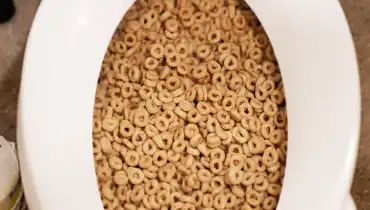Right here on the next paragraphs yow will discover lots of excellent expertise when it comes to Is it safe to flush food (especially rice) down the toilet?.

Intro
Many people are typically faced with the problem of what to do with food waste, specifically when it concerns leftovers or scraps. One typical concern that occurs is whether it's all right to purge food down the commode. In this write-up, we'll look into the reasons individuals could consider flushing food, the consequences of doing so, and alternate techniques for appropriate disposal.
Reasons why people might take into consideration flushing food
Absence of awareness
Some individuals may not recognize the potential harm caused by flushing food down the commode. They may erroneously believe that it's a harmless practice.
Convenience
Purging food down the commode may seem like a quick and very easy service to dealing with unwanted scraps, especially when there's no neighboring trash can available.
Negligence
In some cases, people may merely choose to flush food out of sheer idleness, without considering the consequences of their actions.
Consequences of flushing food down the commode
Environmental effect
Food waste that ends up in waterways can add to contamination and injury water ecosystems. In addition, the water used to purge food can strain water sources.
Plumbing issues
Purging food can lead to clogged up pipelines and drains pipes, triggering expensive plumbing repairs and hassles.
Kinds of food that need to not be purged
Coarse foods
Foods with coarse appearances such as celery or corn husks can get tangled in pipes and create clogs.
Starchy foods
Starchy foods like pasta and rice can absorb water and swell, bring about blockages in pipes.
Oils and fats
Greasy foods like bacon or cooking oils need to never be flushed down the bathroom as they can strengthen and trigger obstructions.
Correct disposal techniques for food waste
Making use of a waste disposal unit
For homes geared up with waste disposal unit, food scraps can be ground up and flushed through the pipes system. Nevertheless, not all foods are suitable for disposal in this way.
Recycling
Certain food packaging materials can be recycled, lowering waste and minimizing environmental effect.
Composting
Composting is an environmentally friendly method to get rid of food waste. Organic products can be composted and used to improve dirt for gardening.
The relevance of proper waste administration
Lowering environmental harm
Appropriate waste management methods, such as composting and recycling, aid decrease pollution and preserve natural resources for future generations.
Protecting plumbing systems
By staying clear of the technique of flushing food down the toilet, property owners can prevent expensive pipes fixings and maintain the honesty of their plumbing systems.
Verdict
Finally, while it might be tempting to purge food down the toilet for convenience, it is necessary to understand the potential consequences of this action. By taking on proper waste management methods and taking care of food waste properly, individuals can add to healthier plumbing systems and a cleaner atmosphere for all.
FLUSH FOOD DOWN THE TOILET?
FLUSHING FOOD CAN CAUSE BLOCKED DRAINS IN YOUR HOME
All of the plumbing fixtures in your home are connected to the same sewer pipe outside of your home. This outdoor sewer pipe is responsible for transporting all the wastewater from your home to the Council sewer mains. Even small pieces of food that go down the kitchen sink can cause problems for your sewer. It should therefore be obvious that flushing larger bits of food, such as meat, risks a clog in either the toilet itself or the sewer pipes. Flushing greasy food is even more problematic because oil coagulates when it cools, coating the interior lining of your pipes.
THE TOILET IS NOT A BIN
Food isn’t the only thing that people shouldn’t be flushing down the toilet. People use the toilet to dispose of all kinds of things such as tampons, makeup wipes, dental floss, kitty litter and even underwear. Water goes to great lengths to educate residents about the high costs and stress placed on wastewater treatment systems simply from people flushing the wrong stuff down the toilet. It costs taxpayers millions of dollars each year, and homeowners thousands in blocked drain repairs.
FLUSHING FOOD IS A WASTE OF WATER
Flushing food is a waste of our most precious resource - water. In June this year Level 1 water restrictions were introduced to protect water supply from drought conditions. Much of New South Wales continues to be affected by prolonged drought with recent figures revealing up to 97 per cent of the state remains in drought. Depending on whether you have a single or dual flush toilet, every single flush uses between five and 11 litres of water. In the current climate this is a huge amount of water to be wasting on flushing food that should be placed in the bin (or better yet, the compost).
https://www.jabplumbingsolutions.com.au/blog/can-you-flush-food-down-the-toilet

Do you appreciate reading up on Flushing Food Down the Toilet?? Make a short review further down. We will be delighted to know your reactions about this blog posting. We hope that you come back again in the future. Sharing is good. Helping others is fun. We truly appreciate your readership.
Call Today